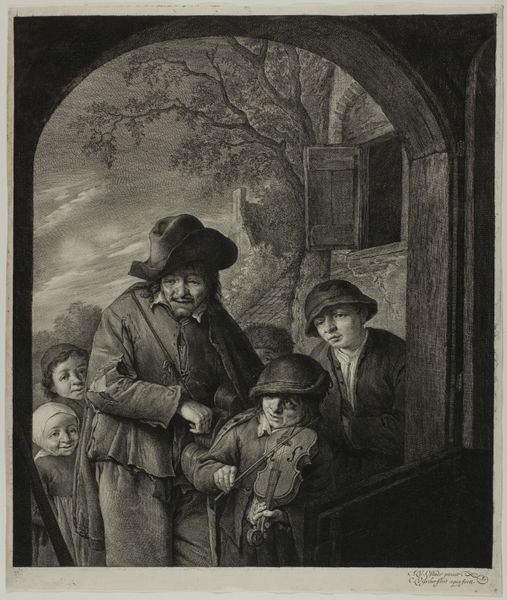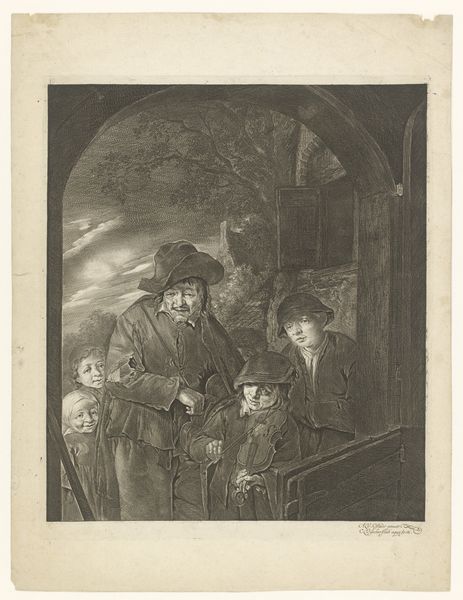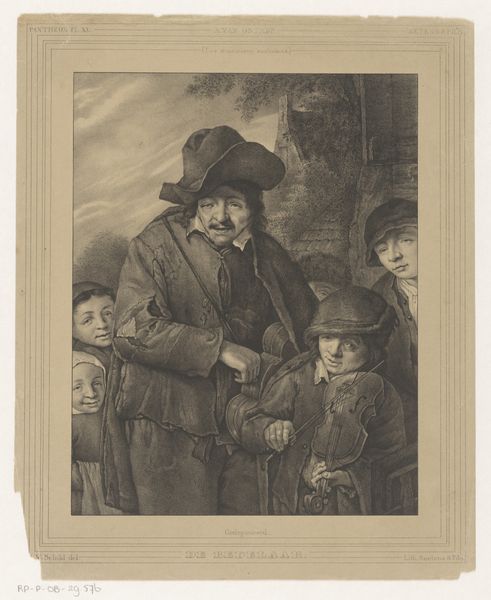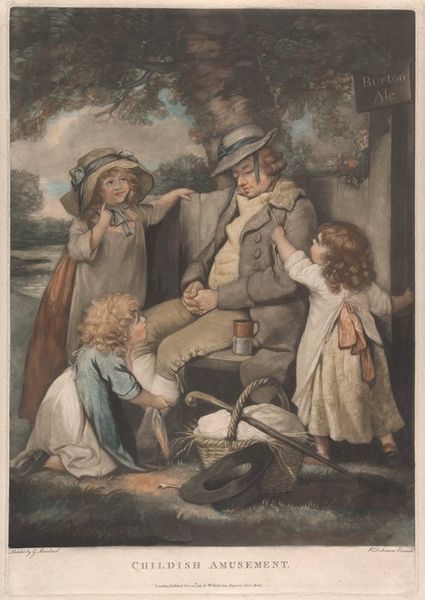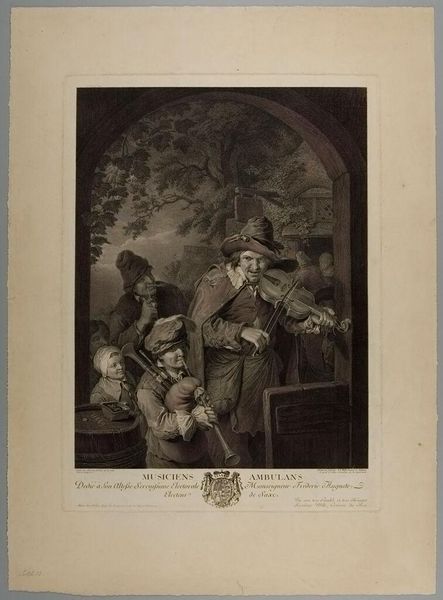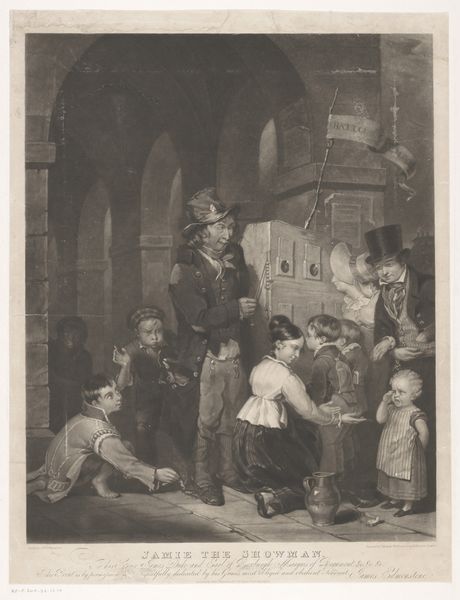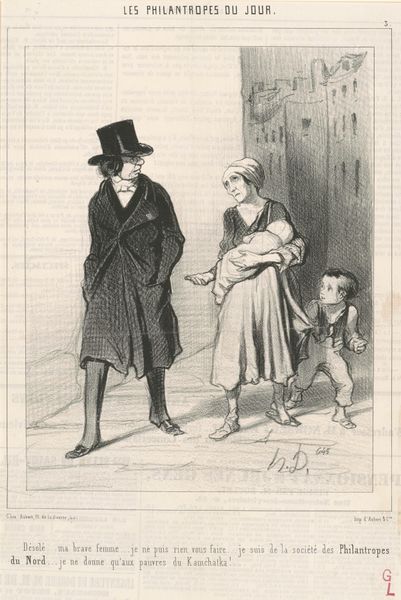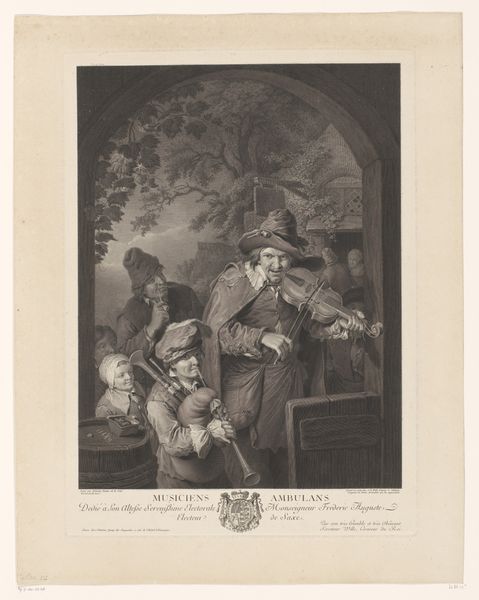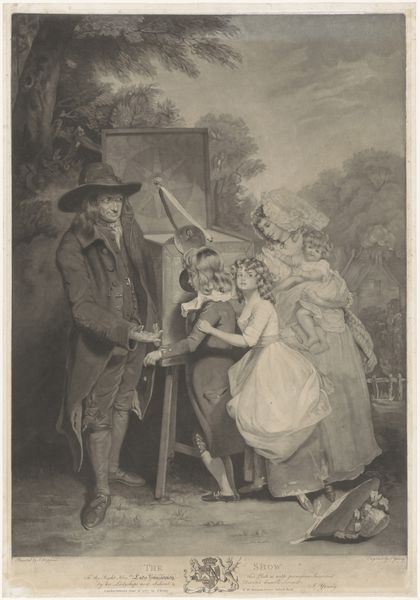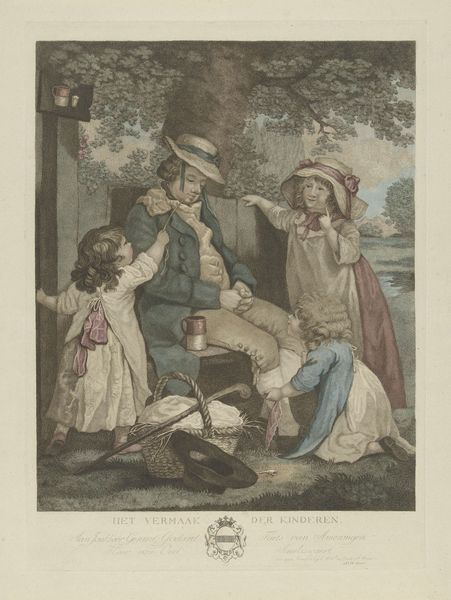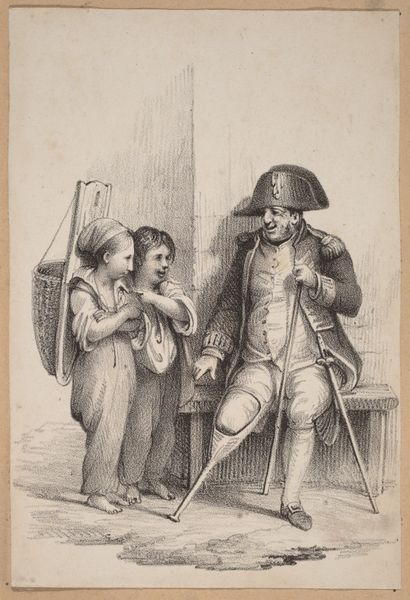
drawing, print, etching, paper
#
portrait
#
drawing
#
dutch-golden-age
# print
#
etching
#
paper
#
genre-painting
#
musical-instrument
Dimensions: 258 × 308 mm (image); 379 × 316 mm (sheet)
Copyright: Public Domain
Curator: Cornelis Visscher’s etching, "The Hurdy-Gurdy Player," created sometime between 1648 and 1658, greets us today. My immediate impression is somber, despite the suggestion of music. There’s a muted quality, a grayness that pervades the scene. Editor: Indeed. That pervasive gray scale, rendered meticulously through etching, establishes a stark reality, reminiscent of the often-brutal existence of itinerant musicians in that era. Consider the figures: they're clustered within a dark threshold. Are they welcome or merely tolerated? Curator: Observe how Visscher orchestrates the composition. The archway perfectly frames the landscape beyond, and also focuses our attention on the faces—the slight upturn of the mouth on the child on the left, for example. These details give an interiority to the subjects. Editor: But their interiority exists within a very real social framework. The Dutch Golden Age was hardly golden for everyone. Think about the accessibility of art, or rather the lack of it, for the lower classes, who likely made up Visscher's audience for such prints. Does this image romanticize poverty or offer a stark glimpse into it? Curator: It complicates the notion, I would say. The detailed rendering—note the textures of the clothing and faces—suggests a dignifying gaze, resisting simple romanticization. The mastery of line and tonal variation elevates the mundane to a noteworthy, considered study of form and affect. Editor: True. But, we also should acknowledge that the figures—perhaps Roma, or of similarly marginalized status—become objects of observation, specimens of otherness, reinforcing the social hierarchy. Can we separate the formal achievement from the ethical implications of its subject matter? Curator: A fair point. It's through Visscher’s technique, and especially his remarkable use of shading, that they seem more than mere "types," no matter their social position. He imbues each face with such distinctiveness that it transcends social commentary alone. Editor: Ultimately, Visscher presents us with a compelling tension between the artistry of representation and the complex realities of 17th-century Dutch society. That visual friction creates something worth continued exploration and dialogue. Curator: Indeed, Visscher's ability to navigate those nuanced artistic currents contributes to the drawing's enduring appeal, even after centuries. The interplay of form and context is where its vibrancy lies.
Comments
No comments
Be the first to comment and join the conversation on the ultimate creative platform.
